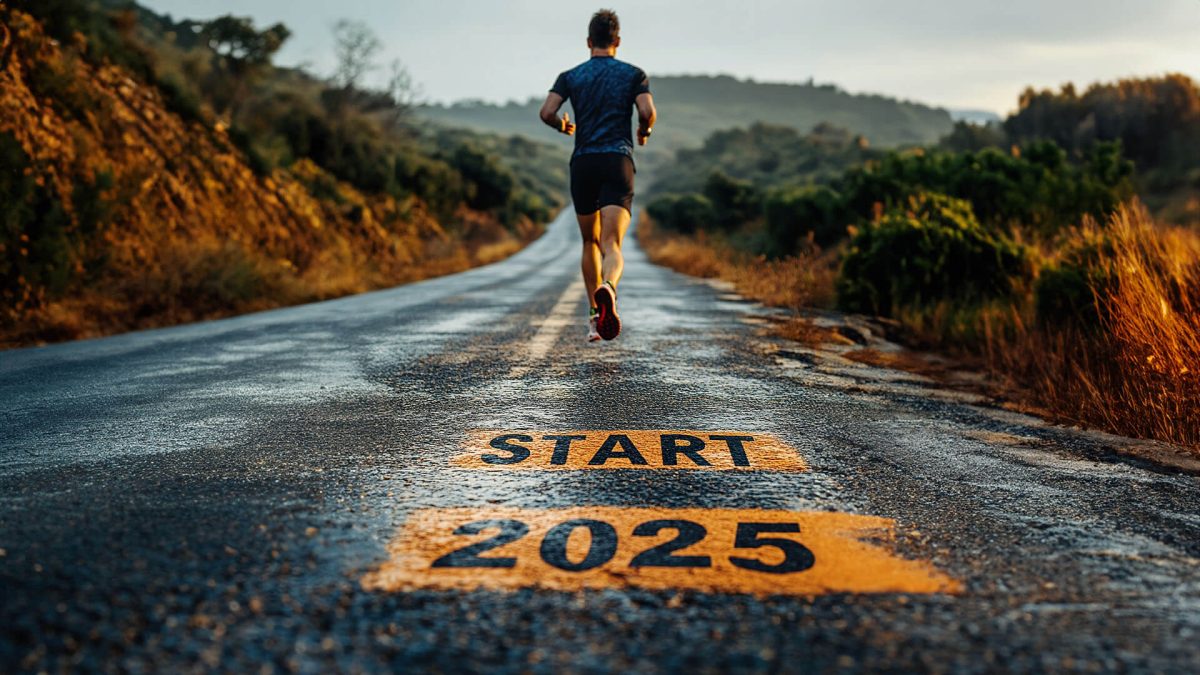Setting fitness goals is a common practice in the United States, with millions of Americans striving to improve their health and well-being each year. However, the journey to achieving these goals is often fraught with challenges. In 2020, only 24.2% of U.S. adults met the recommended guidelines for both aerobic and muscle-strengthening activities, according to the Centers for Disease Control and Prevention (CDC).
Understanding common fitness goals is crucial for effective planning and success. Whether you're aiming to lose weight, build muscle, or improve your overall health, knowing the trends and challenges can help you navigate your fitness journey more effectively. Let's dive into the world of fitness goals and explore how you can set yourself up for success.
Data Source: CDC Physical Activity Statistics
The State of Fitness in America
Physical activity levels among U.S. adults paint a mixed picture. Only 24.2% of adults meet the guidelines for both aerobic and muscle-strengthening activities. This means three-quarters of Americans aren't getting enough exercise. Men are more active, with 28.3% meeting the guidelines compared to 20.4% of women.
Age plays a significant role in fitness levels. Younger adults are more likely to meet the guidelines. For instance, 41.3% of men aged 18-34 hit the mark, compared to just 15.3% of those 65 and over. The trend is similar for women, with 28.7% of younger women meeting guidelines versus 10.8% of older women.
Ethnic background also influences fitness participation. Hispanic men are least likely to meet both guidelines. Among women, non-Hispanic White women lead in meeting the recommendations.
Globally, the picture isn't much brighter. The World Health Organization reports that one in four adults worldwide don't meet recommended physical activity levels. This number is expected to rise to 35% by 2030, posing significant challenges for public health systems.
Data Source:
These statistics highlight the need for increased awareness and action. They underscore the importance of tailored fitness programs that consider age, gender, and cultural factors. By understanding these trends, we can work towards a fitter, healthier America.
Popular Fitness Goals
Weight loss tops the list of common fitness goals. Many aim to shed pounds for better health and confidence. Muscle gain follows closely, with people seeking strength and definition. Improving cardiovascular health is another key goal, focusing on heart and lung fitness. Flexibility and mobility enhancement attract those looking to move better and prevent injuries. Mental health benefits, like stress reduction, are increasingly recognized as fitness goals.
These goals often overlap, creating well-rounded fitness plans. For example, someone might combine weight loss with strength training. Others may focus on cardio while working on flexibility. The key is finding a balance that suits individual needs and preferences.
Setting specific, measurable goals is crucial for success. Instead of vague aims like "get fit," effective goals might be "run a 5K in 30 minutes" or "do 10 push-ups." This clarity helps track progress and stay motivated.
Interestingly, fitness goals often shift with age and life stages. Younger adults might focus more on aesthetics and performance. As people age, health and functionality become priorities. This shift reflects changing needs and perspectives on fitness.
Remember, the best fitness goal is one you can stick to. It should challenge you without being overwhelming. Start small, celebrate progress, and adjust as needed. Your fitness journey is unique to you.
Data Sources:
Most Common Forms of Exercise
Walking reigns supreme in the fitness world. A whopping 79% of adults participate in this simple yet effective activity. It's easy, accessible, and suitable for all fitness levels. Swimming follows closely, with 72% of people making a splash. It's a full-body workout that's gentle on the joints and perfect for all ages.
Surprisingly, gardening matches swimming in popularity. 72% of adults get their hands dirty and their hearts pumping through this productive form of exercise. It's a great way to stay active while beautifying your surroundings.
Other popular activities include DIY projects, bowling, and pool activities. These offer fun alternatives to traditional workouts. Miniature golf, shopping, and gymnastics also make the list. These diverse options show that fitness can be enjoyable and tailored to individual preferences.
Remember, the best exercise is the one you'll stick with. Find activities you love, and you're more likely to make them a regular part of your routine. Whether it's a brisk walk, a few laps in the pool, or tending to your garden, every bit of movement counts towards your fitness goals.
Data Source: Livestrong Exercise Statistics
Challenges in Achieving Fitness Goals
Setting fitness goals is easy, but sticking to them is tough. Nearly 73% of people who make fitness resolutions give up before reaching their goal. Why? Life gets in the way. About 42% find it hard to follow a diet or workout plan. Another 38% struggle to get back on track after a slip-up. Time is also a big issue, with 36% citing lack of it as a reason for quitting.
Many throw in the towel within just six weeks of starting. It's not just about willpower. Our busy lives, work stress, and family commitments can derail even the best intentions. Plus, unrealistic expectations often lead to disappointment. Setting a goal to lose 20 pounds in a month? That's a recipe for frustration.
But don't lose hope! Understanding these challenges is the first step to overcoming them. Remember, fitness is a journey, not a race. Small, consistent steps lead to big changes over time. Stay focused on your 'why' and celebrate every little victory along the way.
Data Source: Bodybuilding.com New Year's Resolution Study
Strategies for Successful Goal Achievement
Setting SMART goals is key to fitness success. Make your goals Specific, Measurable, Achievable, Relevant, and Time-bound. Instead of saying "I want to get fit," try "I'll run a 5K in 3 months." This clarity boosts motivation and tracks progress.
Gradual progression is crucial. Start small and build up. If you're new to exercise, begin with 10-minute walks. Slowly increase duration and intensity. This approach prevents burnout and reduces injury risk.
Variety keeps things exciting. Mix up your routine to challenge different muscle groups. Try a dance class one day, strength training the next. This prevents boredom and improves overall fitness.
Technology can be a powerful ally. Fitness apps track progress, offer workout ideas, and provide motivation. Wearable devices monitor heart rate and activity levels. These tools make goal-tracking easier and more engaging.
Remember, consistency trumps perfection. Aim for regular, sustainable habits rather than intense but short-lived efforts. Celebrate small wins along the way. Each step forward is progress, no matter how small.
Data Sources:
The Role of Nutrition in Fitness Goals
Nutrition is the fuel that powers your fitness journey. Eating right is just as important as your workout routine. A balanced diet supports your body's needs and helps you reach your goals faster.
Protein is crucial for muscle growth and repair. Aim for lean sources like chicken, fish, and beans. Carbohydrates provide energy for your workouts. Choose whole grains and fruits for sustained energy. Don't forget healthy fats from nuts and avocados to support hormone function.
Hydration is key to peak performance. Drink water throughout the day, not just during exercise. Proper hydration improves endurance and prevents fatigue.
Timing your meals can boost your results. Eat a mix of carbs and protein before workouts for energy. After exercise, refuel with a protein-rich snack to aid recovery.
Remember, there's no one-size-fits-all nutrition plan. Your needs depend on your goals, body type, and activity level. Experiment to find what works best for you.
Data Source: American Council on Exercise - Nutrition
Mental Aspects of Fitness Goal Setting
Your mind plays a crucial role in achieving fitness goals. A positive mindset can be the difference between success and failure. Start by developing a growth mindset. Believe that you can improve and overcome challenges through effort and persistence.
Overcoming psychological barriers is key. Fear of failure, self-doubt, and lack of motivation are common hurdles. Tackle these by breaking down your goals into smaller, manageable steps. Celebrate small victories along the way. This builds confidence and momentum.
Consistency is the secret sauce of fitness success. Form habits that support your goals. Start small and gradually increase intensity. Set a regular workout schedule and stick to it. Over time, exercise becomes a natural part of your routine.
Visualization can be a powerful tool. Picture yourself achieving your fitness goals. This mental rehearsal can boost motivation and performance. Combine this with positive self-talk to reinforce your commitment.
Remember, setbacks are normal. Don't let them derail your progress. Instead, view them as learning opportunities. Adjust your approach and keep moving forward. Your mental resilience will grow with each challenge you overcome.
Data Source: Psychology Today: The Role of Mindset in Fitness
Future Trends in Fitness Goals
Get ready for a fitness revolution! The future of fitness is all about personalization and tech. Imagine workouts tailored just for you, based on your DNA. Cool, right? It's happening now. Companies are using genetic data to create custom fitness plans. This means you'll know exactly what exercises work best for your body.
But wait, there's more! Virtual reality is about to make your workouts way more fun. Picture yourself running through a magical forest or boxing against a virtual champion. It's not just a game – it's exercise in disguise. This tech trick might just be the motivation boost you need.
Mental health is joining the fitness party too. More gyms and apps are adding meditation and stress-busting exercises to their programs. It's all about total wellness – body and mind working together.
Data Source: Garage Gym Reviews Fitness Statistics
Ready to jump into the future of fitness? These trends are just the beginning. Stay tuned, stay active, and get ready for a healthier, happier you!
Conclusion
Setting fitness goals is a powerful step towards a healthier you. Remember, your journey is unique. Embrace the process and celebrate small wins along the way. Whether you're aiming to lose weight, build strength, or boost your overall well-being, consistency is key. Don't be discouraged by setbacks – they're part of the journey. Stay focused on your 'why' and keep pushing forward. With determination and the right strategies, you can achieve your fitness dreams. Your future self will thank you for the effort you put in today. So, lace up those sneakers, grab that water bottle, and take that first step. You've got this!
Data Source: CDC Physical Activity Guidelines







